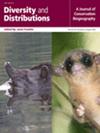Habitat Complexity and Substrate Age Are Primary Factors Influencing Temperate Intertidal Community Assembly
Abstract
Aim
Elucidating mechanisms underlying the formation and maintenance of communities remains a fundamental ecological question. However, the relative importance of niche and dispersal assembly might be contingent. Here, we aimed to investigate intertidal community dynamics to understand the process of community formation and maintenance. Focusing on habitat complexity, substrate age and larval dispersal rate contributes to our understanding of the impact of human activities and climate change on intertidal community change.
Location
Temperate coast of China.
Time Period
2013–2021.
Major Taxa Studied
Intertidal invertebrates, mainly including Gastropods, Bivalves, Polyplacophora and Cirripedia.
Methods
We obtained species distribution data through 9 years of field surveys on temperate coasts of China. We determined taxonomic and functional diversity combined with functional traits. We also analysed the relative importance of environmental factors, including habitat complexity, substrate age, heatwave occurrence and duration, larval dispersal rate, chlorophyll a, dissolved oxygen, nutrients (i.e., nitrate, phosphate and silicate), salinity and seawater velocity by using generalised linear mixed models and redundancy analysis.
Results
Our results show that taxonomic and functional diversity varies across natural and artificial substrates. Community biodiversity on artificial shores with low habitat complexity increases initially and reaches saturation values. However, their saturation values are still lower than those of natural substrate sites with much higher habitat complexity.
Main Conclusions
Habitat complexity and substrate age primarily drive intertidal community diversity. Niche-based processes shape the structure and function of ecological communities on temperate rocky shores in China. Improving habitat complexity is crucial for enhancing both taxonomic and functional biodiversity and restoration in intertidal communities on temperate shores.


 求助内容:
求助内容: 应助结果提醒方式:
应助结果提醒方式:


